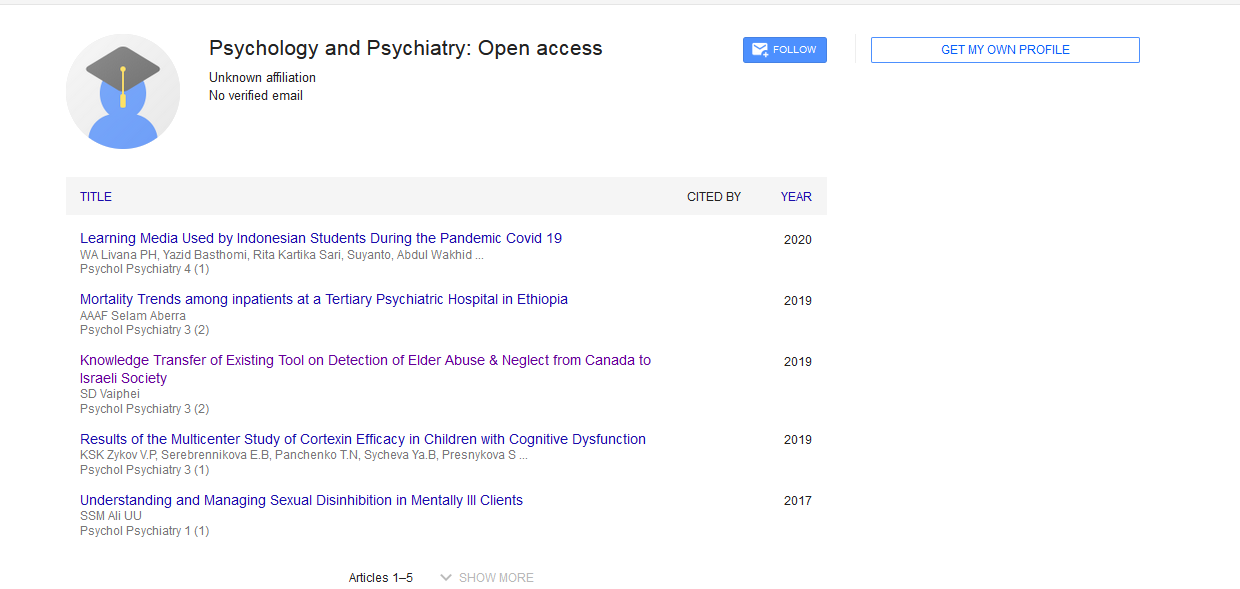A Study on Severity of Pre-Menstrual Syndrome in Teenage Girls
*Corresponding Author: Sarvani Guntuboyana, Department of Psychiatry, Maharashtra University of Health Sciences, Maharashtra, India, Email: gsarvani33@gmail.comReceived Date: May 02, 2023 / Published Date: Jun 23, 2023
Citation: Guntuboyana S, Raju MVR (2023) A Study on Severity of Pre-Menstrual Syndrome in Teenage Girls. Psychol Psychiatry 7: 138.
Copyright: © 2023 Guntuboyana S, et al. This is an open-access article distributed under the terms of the Creative Commons Attribution License, which permits unrestricted use, distribution, and reproduction in any medium, provided the original author and source are credited.
Abstract
Pre-menstrual syndrome as a psychosomatic problem is faced by every reproductive woman in the late luteal phase of the menstrual cycle. Menstruation is a cyclic process that includes physiological, psychological, and behavioral changes in females that affect their daily living. The researcher would like to measure the severity and prevalence of Pre-menstrual syndrome in reproductive females grouped under two categories 16-17 and 18-19 years in the Visakhapatnam District. There are 250 samples collected using the purposive sampling method. Tools used for data collection were the Pre-Menstrual Syndrome Scale (PMSS). Chi-square test and t-test were used through the R Cmdr. Results show that the majority of participants have moderate PMS symptoms, the age category of 16-17 has more PMS problems, and moreover, Intermediate students have more PMS problems than graduate students and also urban respondents have more PMS problems rural area, respondents. The 16-17 age group are intermediate students who prepare for various entrance exams like IIT, JEE, NEET, etc. and they have high pressure and academic stress in college. And also, in urban areas participants have lack of physical activity, eating junk food, etc. may lead to physiological and psychological symptoms i.e., food cravings, abdominal cramps, dizziness, irritability, mood swings insomnia of premenstrual syndrome. And also 16-17 years of age is the transmission age so they have more behavioral problems i.e., impaired work performance, irrational thoughts, being over-sensitive, inconvenient and uncomfortable, etc. Finally, 16-17 years reported that they have experienced a high level of symptoms associated with pre-menstrual syndrome. And also, urban area participants have high pre-menstrual syndrome than rural area participants. Intermediate students have high pre-menstrual syndrome than graduates.

 Spanish
Spanish  Chinese
Chinese  Russian
Russian  German
German  French
French  Japanese
Japanese  Portuguese
Portuguese  Hindi
Hindi 